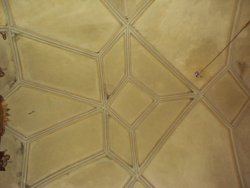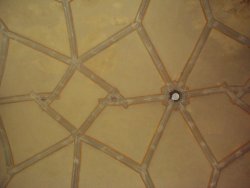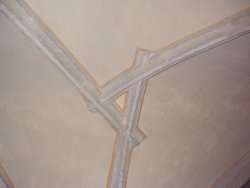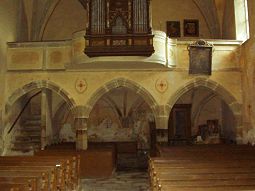Kostel svatého Jana Křtitele v Zátoni
 The Vltava Basin situated
on the mild knoll is dominated by the late Gothic church. It is
probably one of the oldest sacred buildings in South Bohemia. It
was built close to the thoroughfare leading along the right Vltava
riverside with old Gothic-style churches, for example, in Přídolí
or Černice. The presbyterium remains of the Roman church were
discovered under the sacristy foundation during the archaeological
research in 1999.
The Vltava Basin situated
on the mild knoll is dominated by the late Gothic church. It is
probably one of the oldest sacred buildings in South Bohemia. It
was built close to the thoroughfare leading along the right Vltava
riverside with old Gothic-style churches, for example, in Přídolí
or Černice. The presbyterium remains of the Roman church were
discovered under the sacristy foundation during the archaeological
research in 1999.
Zátoň belonged to the Benedict monastery in Ostrov near Davle. It became famous as the richest church in Bohemia , and was destroyed in the beginning of Hussite disorders. In 1310 a small monastery with provost´s residence were added to the church in Zátoň. It was abolished in 1491. After the year 1490 the late Gothic building was probably built up on the old foundation and vaulted in 1510. The roof and prismatoid-shape tower were restored in 1890 ( another work of restoration in 1928 ).
The ground-plan of a five-side presbyterium is very irregular, so the north vault is on the corbels. There is an interesting reticulated vault with cut ribs in the nave. Light penetrates through the windows with original Gothic tracery. The choir is supported by three arches on two eight-side columns and arched with reticulated vault with wedge ribs. The saddle portal with profile wainscoting goes to the nave from the south vestibule. Wound stone bars cut perpendiculars across and intensify the special dynamism. There is a Gothic case for alms on the right next to the door. The entrance from the west facade is framed up in the saddle portal.
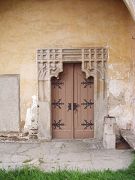
|
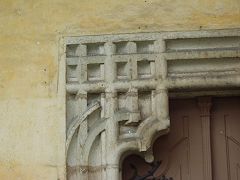
|
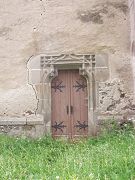
|
There is a graveyard around the church, where several wrought crosses ( the Lepschi Family ) could have be seen in 1980´s.
The Gothic wing altar - the Ark of Zátoň comes from the church in Zátoň. It is displayed at The Prague National Gallery. Madonna on the half-moon dating from the early 16th century can be seen at The Alšova South Bohemia Gallery in Hluboká nad Vltavou.
The altar refectory (table), sanktuarium and baptismal font ( Baroque kettle and dome ) have been preserved since the church Gothic period.
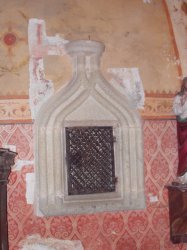
|
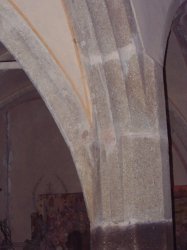
|
Originally the church had contained a very valuable altar from the late 17th century with a picture of Christ at baptism before it was robbed in 1990´s. As well as a collection of candlesticks from the 16th century, and two brass candlesticks from the 17th century.
Two opposite side altars - St. Šimon and Visitation of the Blessed Virgin Mary from the first half of the 18th century ( 1730 - 1740 ). The altar of Virgin Mary with a picture by Philippot dating from 1848.
The inlay pulpit is decorated with high quality wood-carving work - Evangelist relieves. The sculpture of St. Antonín Paduánský from the first half of the 18th century is under the baldaquin.
|
|
|
|
|
|
|
A collection of six Baroque sculptures also decorated the church: St. Florián , St. Donát , St. Anna , St. Vavřinec , St. Jan Nepomucký and St. Linhart - Patron of shepherds a cattle.
Paintings - Stations of the Cross by R. Čurna from the half of the 19th century. The functional organ needs to be restored urgently.
There are five tombstones in the vestibule : Paul Perringer, Antonín Pumerl, Father Ludovik Čížek (the north side of the south vestibule).
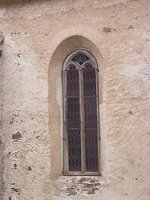
|
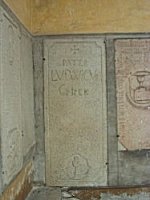
|
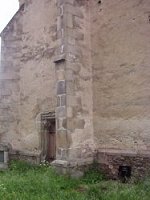
|
The church in Zátoň is a meaningful sacred and artistic monument. It is a part of the Bohemia art history, and is really worth being looked after.
(Zdeněk Duffek)


